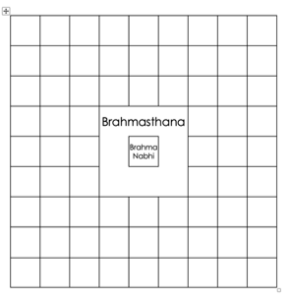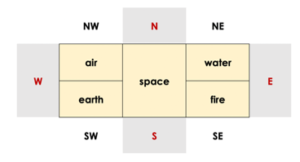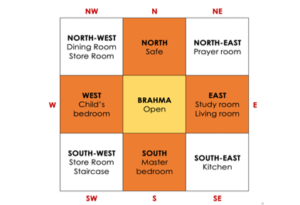What is vastu?
The entire culture of India is based on a science, which can lead you to your total well-being. The particular aspect which covers the construction of buildings, including your home, is governed by the science of vastu.
This science is contained in the Brihat Samhita of Varamihira – in the chapter on Vastu Shastra, in which it states, “I will explain … the science of architecture that has come down from Brahma, through a steady line of collective wisdom”. This document explains that the construction of your home should be totally based on the ancient science of vastu if you wish to experience the balance of energy and harmony on your physical, mental and inner levels, while living in this building.
The basis of vastu is the force of energy. There are two energy forces in nature – the solar and the lunar, which are combined with the four directions – north, south, east and west, as well as with the energies of the five elements – earth, water, fire, air and space. The harmony between all of these in the architecture of your home will determine the harmony within the building itself.
Perhaps not everyone can experience a direct connection to all of these forces at the physical level, but you should at least be aware of the appropriate direction of specific areas of your home if you hope to find harmony in that particular space. Only then can you experience what is truly meant by vastu – living in harmony.
This shastra teaches us that vastu is both a science and an art – not only does it make your living arrangements pleasant but it also gives long term harmony and prosperity to those living within the building. However, those living in this home must also have an attitude of gratitude for everything that they have been given: in the same way that the system of vastu has a Brahmasthana (the centre of the house where the solar energy is centred and can radiate to the different parts of the home), so those who are living in it must also have access to their own Brahmasthana – their own life-centre.
How to use vastu in practice
So, before you start building your home, you should create a drawing of the floor plan of your home – this is called the Vastu Purusha Mandala. It should look like this:

This mandala symbolises the metaphysical principle of the all-encompassing celestial principles. It includes the energies contained in all the topographical items on the actual land on which you are building – soil, rock-formations, oceans, rivers, mountains, stars, planets etc.
Specific vastu functions in your home
In the system of vastu every school of thought interprets the scripture slightly differently, and so their point of view towards the directions of different areas in the house will vary. We are sharing with you the most appropriate and most commonly accepted view-points.
The central and corner sectors of your building are identified with the five primary elements of earth, water, fire, air and space (the Pancha Mahabhutas).

· Water (udaka) relates to the north-east
· Fire (agni) relates to the south-east
· Air (vayu) relates to the north-west
· Earth (prithvi) to the south-west
· Space (akasha) relates to the central area
The next step is to divide the construction into nine equal sectors as follows (called Peeta Mandala). Any activity in your residence should be based on the cosmic position of the five elements, as shown above:

The particular areas of your home will be most in harmony if they face the following directions:
· Dining room – west (north or east is second best)
· Prayer room – east, north or north-east
· Living room – east or north
· Bedroom/s – north-north-west
· Bathroom – facing west, but within that area, the toilet should be constructed so that the person sitting on it is facing north. The toilet could also be constructed to the west of the building, north-north-west or the south, south-east or south-west direction.
As mentioned above, the most significant point of this science for a yoga practitioner is that you should be aware that this knowledge should be used to find your own personal harmony so that you can connect to your own centre within.
In our next article we will discuss the connection between vastu, the five elements and the chakras.


